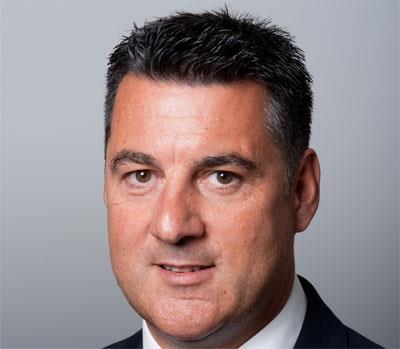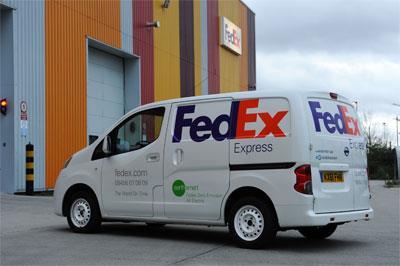
Global express carrier FedEx Express is well on its way to achieving its goal of increasing the fuel efficiency of its vehicle fleet by 20% on 2005 levels by 2020. Steve Hobson asks Will Martin, MD of the UK operation, how it is being achieved here.
Back in 2008, FedEx Express set itself the goal of reducing fuel consumption of its worldwide ground vehicle fleet by 20% on 2005 levels by 2020. By the end of its 2011 financial year, it had already achieved a 16.6% increase in fuel efficiency and is now looking at setting itself an even stiffer target.
“Although we are less than halfway to the end date we set for ourselves, we have achieved 80% of our vehicle fuel efficiency goal as of the conclusion of fiscal year 2011, compared to our original baseline set in 2005,” says Mitch Jackson, staff vice president of environmental affairs and sustainability of FedEx Corp in Memphis. “As a result, we are reevaluating our 2020 goal to potentially raise the standard we originally set out to achieve.”
Worldwide, FedEx Express runs 364 hybrids and 43 electric vehicles, and the latter figure will grow to 130 by the end of the current financial year.
Big strides
In the UK, FedEx ranked number 18 in the latest MT Top 100 with a turnover of £190m in 2011. FedEx UK operates 2,200 vehicles from 75 locations including two hubs, and it has already made big strides towards the parent company’s overall environmental targets.
“The successes have been such we have increased our goal to a 30% reduction in emissions by 2020,” says Will Martin, MD UK Operations at FedEx Express EMEA. “When you set out ambitious environmental goals, you often don’t know exactly how you are going to achieve them because new technologies are always coming to market. It has already been an interesting journey and is an important part of the business that engages the hearts and minds of our team members.”
While FedEx Express is best known as an international express parcels carreir, it also has a significant UK domestic parcels business.
“We are a leader in the express industry in the UK and that isn’t only purely connecting with the global network,” says Martin. “We do provide domestic services as well through FedEx UK. We are partly a contractor model in the UK which is traditional in the domestic market, though we have an employed workforce on the international side, certainly in our dense areas such as London, Glasgow, Manchester and Birmingham.”
Electric pioneer
In these urban areas, where FedEx also owns at least part of the pickup and delivery van fleet, the company has begun introducing hybrid and all-electric vehicles. It has 10 Modec electric vans in operation and has tested an electric Nissan NV200 van in London.

“We are working with a number of companies including Nissan and were pioneers with Modec to bring its all-electric vehicle to the market,” says Martin. “We are no longer sourcing Modec vehicles as they are no longer available, but the ten are still out there in service. The drivers like them and they fit the needs of the business very well. We will be looking at others vendors; the trial with Nissan was successful though the body wasn’t large enough for our typical London volumes and it will be put into service in another market. We haven’t identified anything in the UK as yet that would meet the size of vehicle that we operate.”
The rise and rise of online shopping and the consequent increase in B2C home deliveries at the expense of B2B is making it harder for carriers like FedEx to cut the carbon intensity of deliveries, as drop densities in residential streets are lower than to business premises.
“As B2C grows, that last mile is very important and we are looking at ways we can improve that,” says Martin. “We try to minimise failed attempts through improving the information available to our customers to avoid unsuccessful deliveries, which used to drive a lot of carbon emissions in the B2C market. We don’t have delivery slots or text alerts as such though we have premium services with timed delivery windows and we do use email to contact our customer base.”
Line-haul improvements
A proportion of FedEx Express’s local delivery and collection work is carried out by owner-drivers where Martin has less influence over vehicle specs and driver behaviour, and its main inhouse fleet is the ground line-haul LGVs. While a viable low-carbon alternative fuel for heavy trucks remains elusive, FedEx Express has been working hard to improve the fuel efficiency of its line haul fleet.
“That includes driver behaviour under a programme that we call Eco-drive, and we are also doing a lot with telematics, which is quite exciting,” says Martin. “Early adopters were restricted in the technologies they used but we have taken advantage of the latest technologies to link the tracking of the vehicle with the engine management systems.”
The company is also investing in aerodynamic trailers and improved route planning to reduce mileage driven. It has also reduced the speed of its night-time trunking vehicles to conserve fuel, but Martin says that as an express carrier this isn’t always possible.
“Being in an express environment we have to run to time,” he says. “But where we have night line-haul that has less pressing time demands we can reduce the speeds. Combined with telematics and driver training we believe we will realise a 5% to 6% improvement in fuel consumption.”
To drive further fuel savings, FedEx Express has set up a European steering committee to share best practice and purchasing power. “We have a global fleet purchasing programme to enable us to work with vehicle manufacturers to bring low carbon technologies to market,” says Williams. “The UK will have some specific local goals but we will also take advantage of the more strategic thinking on technology and how we can connect the world best.”
In the US, FedEx is trying out hybrid diesel-electric vehicles on its line-haul trunking fleet, and it is experimenting with bio-diesel, but Martin admits the company has yet to find an alternative to diesel.
“We are exploring the horizons of these new technologies but there isn’t an alternative fuel yet,” he says. “This isn’t just down to the operators – the government has to invest in the infrastructure.”
EarthSmart brand
While some customers are taking a greater interest in the carbon emissions of their supply chains, Martin says it is not yet close to the top of the agenda for most users of FedEx services.
“Where before there was a leaning towards the fastest possible service, particularly in the international side, customers are looking more at our different services,” he says. “We are not negotiating over carbon with our customers, though we try to encourage them to move to our environmental packaging, for example. A lot more customers are asking us questions about how we are reducing carbon emissions. We are market leaders here through the initiatives we have underway and through our EarthSmart brand we are doing a lot to promote that to our customers.”














